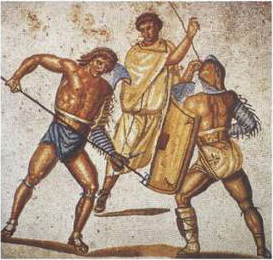 As Archaeopop's resident Egyptologist, I present: Lost Hieroglyphs Explained!
As Archaeopop's resident Egyptologist, I present: Lost Hieroglyphs Explained!Here are three images from the tv show Lost: 1) the word that pops up when the timer in the hatch runs out; 2) a drawing of the hieroglyphs that were later carved by the Lost art department team; and 3) the same hieroglyphs from picture 2, as they appear on a set from Lost. I'll give the translations, but I'll also explain the functions of the individual signs themselves, just in case any readers out there are clamoring to know.
Image #1: This is fairly straightforward, since the word is spelled correctly in hieroglyphs and all of the signs are facing the proper direction. These five signs, read from left to right, spell the ancient Egyptian word "sudja", which means "die". [For the specialists out there who would like the technical transliteration from Egyptian to English, the best I can provide is swd3, since this blog does not come equipped with a transliteration font.] The first sign represents "s"; the second "w" (which we pronounce here as a "u"); the third sign is a biliteral, meaning it stands for two consonants - in this case, the sound "dj" (just one letter in Egyptian) and "a" (which I know looks like a vowel, but it's an aleph, and therefore a consonant); the fourth sign represents "a" but is not pronounced separately, since its purpose here is to reinforce the "a" in the previous biliteral; and the fifth sign is a determinative, which is a sign that has no phonetic value at all, but clarifies the meaning of the word. It is this determinative, in fact, which tells us that the intended meaning is "die", since the word "sudja", when spelled differently, can also mean "to make healthy"!
Images 2 and 3: This inscription comprises two words - the top row is the ancient Egyptian word "nis" (in transliteration, njs), meaning "to summon", and the second row is the Egyptian word "nedj" (in transliteration, nd [second d]), which means "protection". However, these words are not as straightforward as that in the previous image, because the people from Lost actually wrote the hieroglyphs backwards. In other words, the hieroglyphs are facing to the left, which means that they should be read from left to right, but this results in gibberish. The words must instead be read from right to left (which is perfectly fine, since hieroglyphic text could be written in either direction), but the hieroglyphs are facing the wrong direction for right-to-left reading. This is somewhat similar to writing "nommus" instead of "summon" and "noitcetorp" instead of "protection". Although some ancient Egyptian religious texts were intentionally written with hieroglyphs facing the wrong direction - called "retrograde" texts - it seems unlikely that the artists for Lost would have employed this technique, unless the expert they consulted actually gave them the words in retrograde to begin with.
Here is a video in which the folks at Lost incorrectly believe that these signs represent the word "grief":
So, the top row from right to left: the first sign stands for "n", the second sign for "i", the third sign for "s", and the fourth is a determinative.
The second row, from right to left: the first sign is not an ankh. It's a spindle, but that's not significant here. What's significant is that it is a biliteral sign that stands for the two consonants "n" and "dj" (again, dj is one letter in Egyptian). The second sign is also a biliteral that usually stands for "nu", but when it's combined with the previous sign, it also represents the letters "ndj". Much like Arabic and Hebrew, hieroglyphic script did not write short vowels (like "e"), so we have to insert the "e" in the pronunciation. Thus, ndj = nedj.
So there you have it.

















